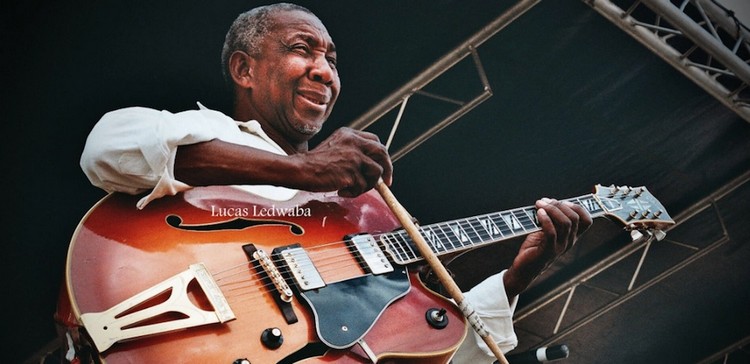Blues scale guitar playing can open up a world of new sounds with just one additional note – Let’s explore!
Over 100,000 guitar-learners get our world-class guitar tips & tutorials sent straight to their inbox:
Click here to join them
Get our best guitar tips & videos
In this free lesson you will learn…
- What the ‘blue note’ is
- How to play the blues scale
- How to navigate the guitar in A minor
- The difference between the blues scale & the pentatonic scale
- The main shape of the blues scale
The Blues Scale Can Open Up New Horizons In Our Playing
Often used by (you guessed it) blues and rock musicians, the blues scale creates a brand new approach to the minor pentatonic scale and its various uses.
This scale is favoured by lead guitarists that want more fluid motion from their minor pentatonic scales.
- By adding only one note (which you’ll learn a lot about shortly), we can create a blues-fueled approach to the guitar that will elevate our playing and sharpen our ears.
- Blues scale guitar playing is a great way to open up our ears to the notes we can add to a scale to create new colours in sound.
Let’s jump into the fine details below:
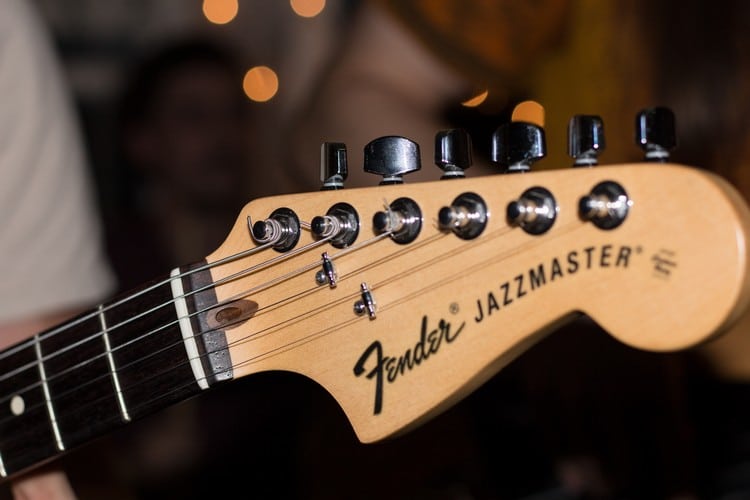
What Is The Blues Scale?
If you’ve kept a pretty consistent learning regimen so far, chances are you’ve learned the major scale and the minor pentatonic scale already.
If not, click the links above to get caught up.
- Where the major scale contains seven notes and the pentatonic scale contains five, the blues scale contains six notes.
- This is an important distinction to make because the blues scale guitar approach can look quite similar to either of these scales.
The blues scale contains its own type of note that we will rarely see anywhere else – we call this ‘The Blue Note’

We can remember the name of this note easily because it adds a unique ‘colour’ to the scale we are playing.
- This further reinforces the concept that one note can change the entire context of what we are playing.
- Why is this concept so important?
Every scale is defined by the notes they contain.
Those notes, when combined, form a series of specific chords that support that scale.
- Changing even one of these notes will result in not only a different scale altogether, but a different series of chords as well.
- This is why learning a bit of theory to support our musicality can be so important – Theory helps us organize our twelve-tone selection of notes into musical scales and chord shapes.
- The blue note is used as a ‘transitional note’ within the pentatonic scale.
Let’s look at the scale shape to figure out why that is and what it means.

Blues Scale Guitar: Root Position
For this lesson, we will be looking at this scale in the key of A minor.
This is an easy key to play in for beginners, as the only non-natural (aka ‘accidental’) note in the scale is the blue note.
- Begin the same way you would any minor pentatonic scale – Assign your four fingers to the 5th, 6th, 7th and 8th frets and use each finger only on its assigned fret.
- Typically, our middle finger doesn’t get any attention when playing minor pentatonic scales.
- With this blues scale guitar approach however, our middle finger is the hero of the day.
Here’s our basic minor pentatonic scale without the blue note:

On the A string, we’re met with a 3-fret step with our index, middle and ring fingers.
- Get used to this sound as best you can, as this 3-step sound is what makes the blues scale unique.
- Your middle finger will handle the step between the 5th and 7th frets. Use this as a ‘walk-up’ from the 5th fret to the 7th fret.
- This is what we mean when we say that the blue note is used as a transitional note.
This note helps provide a bridge between our 4th and 5th scale degrees, and it helps to think of it as such.
Use the blue note to cross forward and backwards between these two intervals and you will quickly master the ‘momentum’ of the scale.
Check out the A minor blues scale below:

Download our lead guitar cheat-sheet to make things easier
It's hard to understand which scales work with which keys.
So we created a cheat-sheet! A key and scale-finder that you can use again and again.
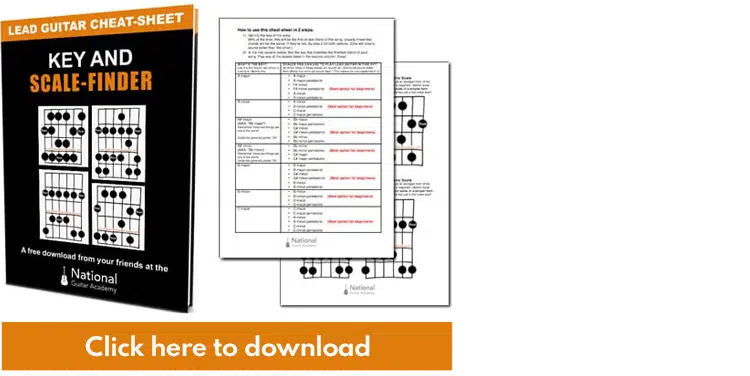
Get your personalised guitar-learning plan 🎸
Get a custom guitar-learning plan here: Click here for GuitarMetrics™
World-Class Guitar Courses 🌎
Learn from the world's best guitar educators: Click here for our guitar courses
Blues Scale Guitar: Theory & Construction
As discussed above, the approach to blues scale guitar playing involves the use of six notes.
This theory applies to major and minor scale shapes, but today we’re going to focus on the minor pentatonic scale.
- This is where we most often see the blue note appear as beginner guitar players.
- The minor pentatonic scale contains notes 1, 3, 4, 5 and 7 of the natural minor scale.
This means that the minor pentatonic scale by nature contains two fewer notes than its natural cousin.
When we want to spice up the minor pentatonic scale with some blues scale guitar playing, we include what we refer to as a ‘b5’ or a ‘#4’ note.
It’s important that this note is added on top of the five notes we already have in the minor pentatonic scale.
This pentatonic scale becomes a hexatonic scale with the inclusion of this sixth note.

The b5 (flat 5) or #4 (sharp 4) is the note that exists between the 4th and 5th scale degrees.
Due to the fact that it lies right in between two notes, it can either create melodic satisfaction or an incredible amount of dissonance depending upon how we play it.
Pro Tip: This blue note will appear twice across six strings in the box shape we’ve illustrated below.
These scales, despite their one note difference, are wildly different in nature.
Play the examples below to see and hear the difference between pentatonic scale guitar playing and blues scale guitar playing.
Can you hear the difference?

Blues Scale Guitar: How Can We Use It?
It’s important to note that blues scale guitar playing applies over all of the chords we already know from both the major and minor scales.
- The blue note can be accented, but it should never be emphasized when soloing.
- This means that we may pass through the blue note to get from one note to another, but we should never land on it as a means of ending a musical phrase.
The reason for this is that some notes (like the blue note) can cause dissonance if we emphasize them too much.

Dissonance occurs when one note clashes with another because they are a half-step (1 fret) apart.
- This closeness causes notes to interact with each other in a weird way.
- In order to keep things melodic, we want to focus on notes that don’t cause dissonance and emphasize them.
Using dissonant notes to transition to non-dissonant notes makes for great melodic movement!
Now, let’s look at the differences between the minor pentatonic and minor blues scales in two octaves instead of one.

Try This: Play along to this backing track using the blues scale guitar shape illustrated above.
Now, try ending on the 6th fret on the A string.
Sounds terrible, right? Right.
Now, play from the 5th fret on the A string and “walk-up” to the 7th fret. Take note of how the blue note allows us a melodic passage from one note to the next.
Pro Tip: The blue note has a musical ‘pull’ to it. Try soloing over the backing track above and ‘hang’ on the 8th fret on the G string.
Listen for where the blue note pulls you, as it will want to either move up or down depending on how and what you are playing. Move in that direction.

Some notes will direct us where to go next all by themselves, and this is one of the cool things about blues scale guitar playing.
- The notes we play and how they sit with our ears will determine where we take our soloing or riff-writing next.
- Once you begin to develop your ears as a musician, you will realize that they can make musical decisions for you before you’ve even thought about what to play.
Playing music can become an unconscious experience through effective practice and education on our scales and chords.
Once we know what we like to hear, our ears will write music all by themselves.
Practice this scale inside and out and you’ll be writing blues scale guitar music in no time.

Blues Scale Guitar: How To ‘Hear’ The Blue Note
Practice makes perfect, and hearing scales over and over again can help embed their sound into our ears and brain.
- In order to hear and harness the sound of blues scale guitar playing, we need to practice this scale in different contexts.
- Try playing this scale over a different minor scale backing track, then switch to playing the same scale over a C major progression.
- Rotate back and forth between playing this scale shape in A minor and C major.
Due to the fact that these two keys are relative to each other, they contain the same notes in different orders.
This means you now have two separate keys to practice your blues scale guitar playing with!

Pro Tip: The context of the blue note changes depending upon whether we are playing in C major or A minor, but the ‘pull’ of the note remains the same.
The blue note will always pull us to another note, but which note we are pulled to largely depends on the chords that are being played. This is why listening is so important.
When you are practicing your blues scale guitar approach, listen to the chords of the progression you are playing under.
The most accurate style of guitar playing comes from listening to what is happening around us before we ‘speak’ with our instrument.
This concept is even more important in blues music and blues scale guitar playing, which is largely based around jamming with other musicians.
Listen for the difference in where the blue note takes you in C major versus when you play it in A minor.
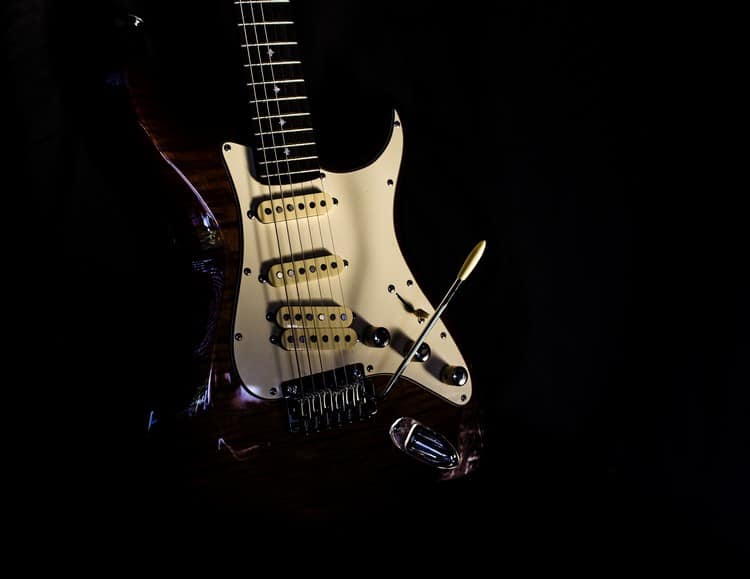
Learn 12 EASY beginner chords with our popular guide


Where should we send it?
✅ Stop struggling. Start making music.
✅ Learn beginner-friendly versions of every chord.
This is our most popular guide and it will improve your chord ability quickly! 😎
Get your own personalised guitar-learning plan 🎸
Get a custom guitar-learning plan here: Click here for GuitarMetrics™
World-Class Guitar Courses 🌎
Learn from the world's best guitar educators: Click here for our guitar courses
Blues Scale Guitar: Riffs You Can Use
The examples we are going to play through today are designed to help you hear what blues scale guitar playing sounds like specifically.
Because blues scale guitar playing relies so heavily on the blue note, we’re going to play examples that teach us how to play through the note.
Pro Tip: Listen for the ‘step-up’ that we talked about.
This is an important concept to get inside your ears to truly master the sound of blues scale guitar playing.
We’re also going to use the blue note to land on and step-up to another note in the minor pentatonic scale.
Once again, listen for the pull of the note. It will tell you where it wants to go.
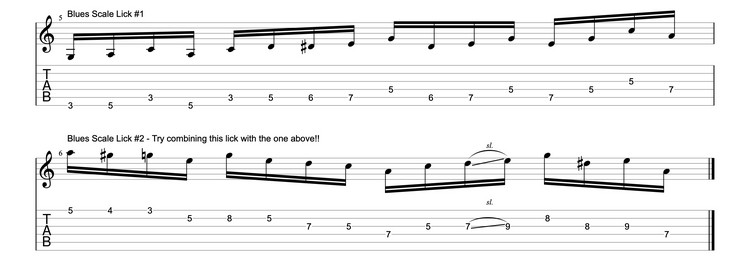
Blues Scale Guitar: Who Uses This Scale?
Prior to it being popularized by Blues musicians around the world, the exact origins of this scale are elusive to music researchers.
The blues scale is believed to have been popularized by African Americans in the American South during the late 1800s.
- Blues scale guitar playing became popular through the breakout of Blues music.
- Artists like BB King, Stevie Ray Vaughan and even Jimi Hendrix would use this hexatonic scale to supercharge their guitar playing in a variety of different ways.
The magical part of the blues scale is how many chords it can fit overtop of.
Here’s a short list of the chords you can play under the blues scale:
Major / Minor / Major 7 / Major 9 / Major 6 / 9 / 13 / Minor 9 / Minor 11 / Minor 6

Now before we finish, don’t get it twisted – This scale isn’t just used by the classic greats.
In 2019 more than ever, Blues is making an aggressive comeback with a new edge and more bite than ever.
Vintage Trouble (Hollywood, California) are making waves with their modern Rhythm & Blues approach, while Jim Dan Dee (Toronto, Canada) are determined to spread the word that the Blues is far from dead.
Go check out some Blues bands and listen for how they approach the blues scale guitar sound!
On a final note, for an interesting read on the perceived origins of the blues scale (and new discoveries surrounding them), check out this article from Composer’s Toolbox!
Where Do I Go From Here?
Want to keep learning how to improve your blues scale guitar skills?
Practice makes perfect, and there’s always something new to learn, so we recommend:
- Write a guitar riff using this scale
- Solo over another backing track
- Look up the tabs to your favourite blues guitar song and learn it!
- Experiment with the blue note and different placements inside your solos
- Listen to Stevie Ray Vaughan and BB King
Recommended Resources
If you loved this lesson on blues scale guitar playing, you’ll love some of our other FREE content!
- Major Scale Guitar – An Essential Guide
- Lead Guitar Lessons For All Guitarists
- A Minor Pentatonic Scale
- Learn Guitar Scales in 8 Easy Steps
- Guitar Tutorial: The Ultimate Guide
What Type of Guitarist Are You?
Take our 60-second quiz & get your results: Take The Quiz
Join the world's best online guitar school 🌎
- Get your own personalised guitar learning plan (customised just for YOU).
- World-class online guitar courses. Learn at your own pace.
- Community Campus & Learning Forum - A friendly community! Connect with our team & students. 😊
- Beginner Song library with chordsheets, tabs and tips. (Songs suitable for all levels!)
- Regular live streams, seminars and Q&A sessions - Learn from world-class guitar educators. Get all your questions answered!
Click here to learn more about National Guitar Academy membership 
Cool Guitar T-shirts 😎
Look cooler! Check out our merch: Click here to see our merch store
Want free guitar tips and video lessons delivered to your inbox?
Join over 100,000 guitar-learners and subscribe to our guitar-tips-by-email service. (It's free.)
We'll send you a series of lessons that will move you to the next level of your guitar journey.
Learn how everything fits together quickly, easily and effectively. We share ninja tips (for instant fun!) but also timeless fundamentals that will deepen your understanding.


Get our best guitar tips & videos
Popular Lessons
How To Learn Guitar: An 11-Step Programme For Beginners
How To Choose The Perfect Beginner Guitar
More Cool Guitar Stuff
Learn about National Guitar Academy: About Us
Join us on Facebook for daily guitar tips.
Listen to our Learn Guitar Podcast for rapid guitar progress.
Check out our free chord lessons.



